This time, we’re introducing Maho no Rinobe—a renovation-themed slice-of-life manga filled with respectful speech and realistic client interactions. Perfect for learners aiming to improve their polite and business Japanese in practical, everyday contexts.
Work Information
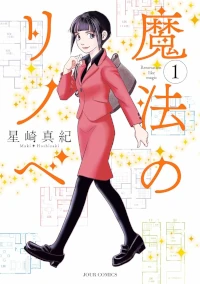
Maho no Rinobe (魔法のリノベ)
Author: Hoshizaki Maki
Publisher: Futabasha Publishers
Amount of text: moderate
Challenge level: ★★
Latest volume : Vol.7(Nov.2024 / Ongoing)
Story overview
Renovation refers to large-scale remodeling work on a home, such as altering the layout. Marufuku Construction, a family-run business operated entirely by men, handles these kinds of projects. At the president’s decision, Koume, who had been working at a major construction company, has now joined the team. She is paired with the eldest son, Genosuke, who is soft on women and somewhat timid. Together, they face a series of challenges: a husband wanting to renovate a traditional Japanese room into a spacious living-dining-kitchen area, a wife opposed to any changes, an immovable wall, an unbreakable garden, and various other dilemmas!
The Appeal of This Manga
With the unique theme of home renovation, this manga is more than just a story of professional growth for the main characters. The renovation requests they receive from clients often reflect deeper personal issues—such as regrets, conflicts, or emotional distance in their lives. The real appeal lies in how the protagonists’ renovation proposals don’t just fix homes—they help resolve the clients’ life challenges as well. It’s a thoughtful and engaging read, especially suited for more mature audiences.
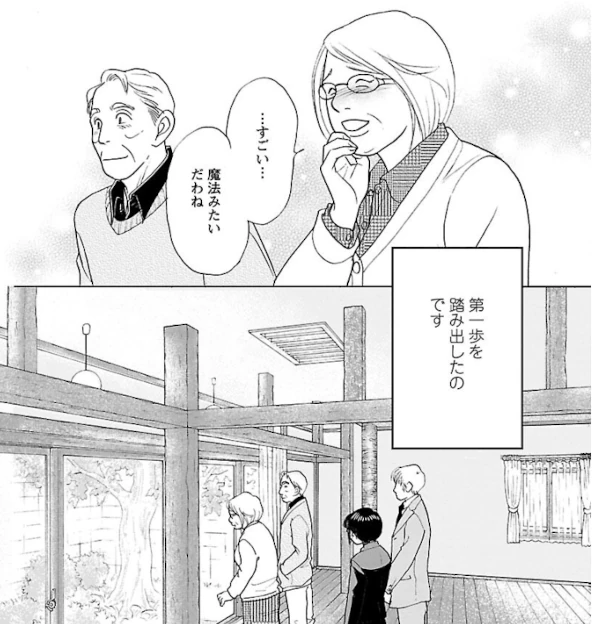
Why this manga is suitable for learning Japanese
This manga is not only entertaining but also highly recommended for Japanese learners for several reasons.
Frequent Use of Business Keigo in Conversations
The main characters of this manga work at a construction company that specializes in renovations. Since the story primarily revolves around their interactions with clients, there are many scenes where they engage in proper business keigo, using both humble and respectful language.
Additionally, since the two main characters, Koume and Gennosuke, converse with each other using polite language, this manga features a high proportion of keigo and polite speech.
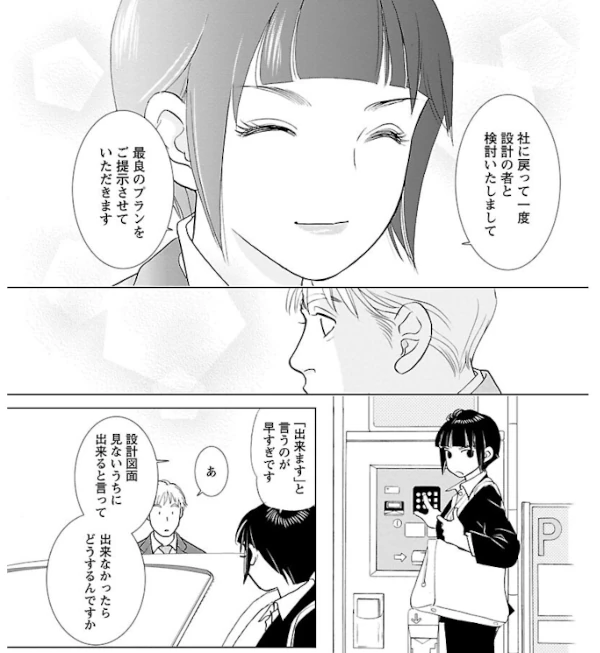
The Everyday Nature of the Renovation Theme
The reasons why clients seek renovations in this story are often to improve their quality of life or to address dissatisfaction with their current living conditions. Because the theme centers on daily life, the conversations naturally reflect topics rooted in everyday living. As a result, rather than showcasing keigo examples limited to specific business situations, the dialogues offer content that can be broadly applied to everyday conversations.
While the sections related to renovation naturally contain a bit more information due to the nature of the work, the overall text volume feels just right—not too much, not too little. Additionally, the effective use of large panels and well-balanced layout makes the manga very easy to read.
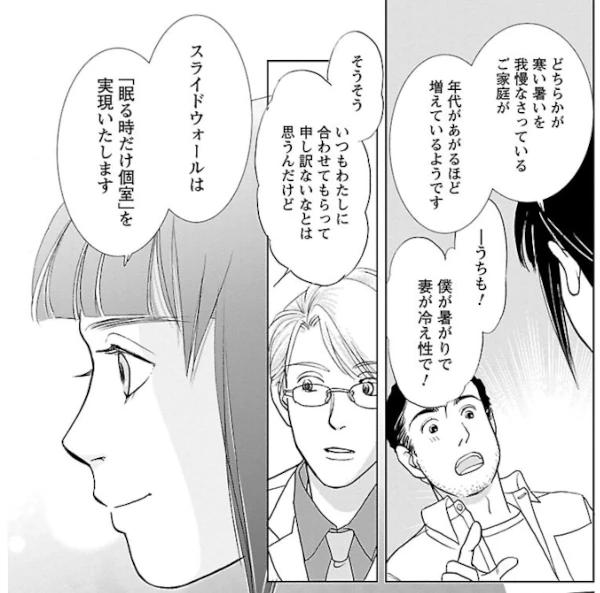
Phrase Spotlight
「推し」: From Idol Fandom to Everyday Favorites in Modern Japaneseこの中古、お義母さんの推し物件だったの!?
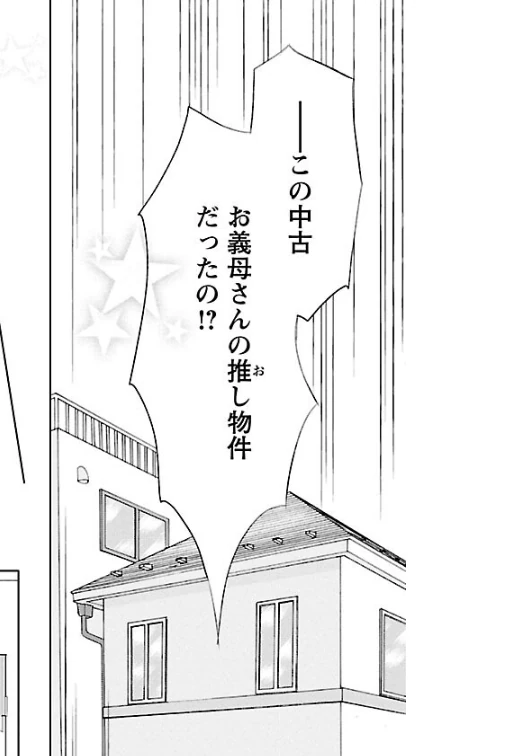
In a scene from a home renovation manga, a woman is shocked to learn:
「この中古、お義母さんの推し物件だったの!?」
“This used house… was my mother-in-law’s oshi pick!?”
This humorous moment offers a great example of how the Japanese word 推し (oshi) has grown beyond its original context—and why it’s worth understanding for learners of Japanese.
From “Recommendation” to “Devoted Support”
The noun 推し comes from the verb 推す (osu), which traditionally means “to recommend” or “to endorse.” In Japanese, 推す could be used in serious contexts—such as nominating someone for a position—with the nuance of recommending and actively supporting that person’s appointment. In such cases, 推す carries both the ideas of recommendation and encouragement or backing.
With the rise of modern idol culture, however, the noun 推し began to take on a more emotionally expressive and personal meaning. Fans started using it to refer to the idol, character, or performer they supported most passionately. For example:
「私の推しは〇〇です。」 – “My favorite (idol) is 〇〇.”
This fan usage emphasized devotion, cheering on, and personal admiration—shifting the nuance of 推す from formal endorsement to emotional allegiance.
A Word That Evolved with Culture
Over time, this more personal sense of 推し became widespread in daily conversation, extending far beyond the world of idols. Today, people use it to describe their personal favorite in almost any category—cafés, pets, fashion brands, books, even houses.
Examples include:
「このパン屋さん、私の推しなんです。」
“This bakery is my favorite!”
「最近、推しの作家の新刊が出た。」
“My favorite author just released a new book.”
This expanded use reflects a broader cultural shift toward expressing personal enthusiasm and emotional attachment—something that resonates strongly in today’s Japan, especially among younger generations.
What It Means for Learners
Understanding the term 推し gives learners valuable insight into both contemporary slang and how Japanese culture expresses personal preference and emotional attachment. Whether used seriously or playfully, 推し is a great example of how modern Japanese adapts language to reflect changing social trends.
So next time you hear someone talk about their 推し, remember—it could be a pop star, a dog, a snack, or even a secondhand house!
A Little Warning
It Might Be Challenging If You’re Not Interested in Housing or Renovation
Since this manga is set in the renovation industry, it includes a lot of information related to floor plans and housing. For those who aren’t interested in these topics, it might be difficult to keep reading.
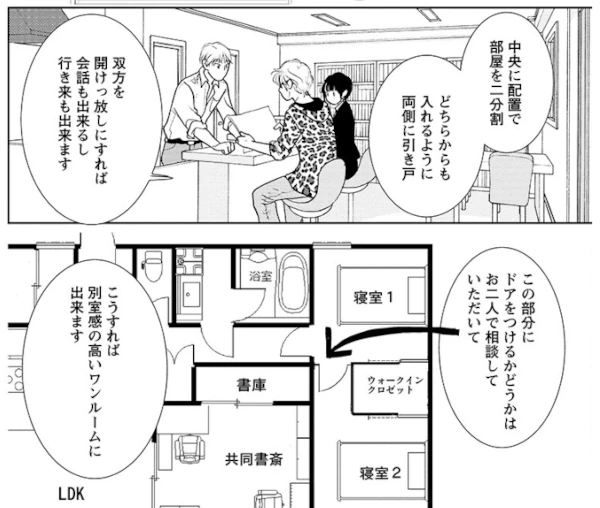
Work Information

Maho no Rinobe (魔法のリノベ)
Author: Hoshizaki Maki
Publisher: Futabasha Publishers
Amount of text: moderate
Challenge level: ★★
Latest volume : Vol.7(Nov.2024 / Ongoing)
Here’s a safe and convenient way to purchase Japanese manga.
This Blog’s ConceptIn this blog, we are introducing manga that are not only highly captivating but also ideal for Japanese language learners. Studying Japanese through manga is both fun and effective. Manga allows you to understand the subtleties of keigo (honorifics), teineigo (polite speech), and casual conversation in Japanese. We hope you find works that match your interests and use them to enhance your Japanese learning journey.